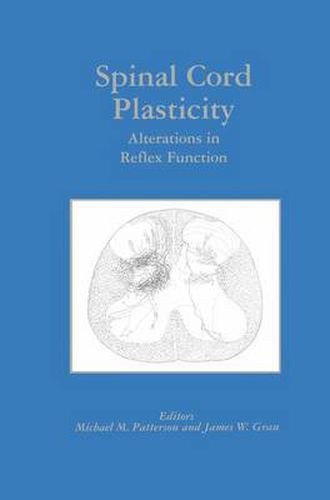Readings Newsletter
Become a Readings Member to make your shopping experience even easier.
Sign in or sign up for free!
You’re not far away from qualifying for FREE standard shipping within Australia
You’ve qualified for FREE standard shipping within Australia
The cart is loading…






This title is printed to order. This book may have been self-published. If so, we cannot guarantee the quality of the content. In the main most books will have gone through the editing process however some may not. We therefore suggest that you be aware of this before ordering this book. If in doubt check either the author or publisher’s details as we are unable to accept any returns unless they are faulty. Please contact us if you have any questions.
The area of spinal cord plasticity has become a very actively researched field. The spinal cord has long been known to organize reflex patterns and serve as the major transmission pathway for sensory and motor nerve impulses. However, the role of the spinal cord in information processing and in experience driven alterations is generally not recognized. With recent advances in neural recording techniques, behavioral technologies and neural tracing and imaging methods has come the ability to better assess the role of the spinal cord in behavioral control and alteration. The discoveries in recent years have been revolutionary. Alterations due to nociceptive inputs, simple learning paradigms and repetitive inputs have now been documented and their mechanisms are being elucidated. These findings have important clinical implications. The development of pathological pain after a spinal cord injury likely depends on the sensitization of neurons within the spinal cord. The capacity of the spinal cord to change as a function of experience, and adapt to new environmental relations, also affects the recovery locomotive function after a spinal cord injury. Mechanisms within the spinal cord can support stepping and the capacity for this behavior depends on behavioral training. By taking advantage of the plasticity inherent within the spinal cord, rehabilitative procedures may foster the recovery of function.
$9.00 standard shipping within Australia
FREE standard shipping within Australia for orders over $100.00
Express & International shipping calculated at checkout
This title is printed to order. This book may have been self-published. If so, we cannot guarantee the quality of the content. In the main most books will have gone through the editing process however some may not. We therefore suggest that you be aware of this before ordering this book. If in doubt check either the author or publisher’s details as we are unable to accept any returns unless they are faulty. Please contact us if you have any questions.
The area of spinal cord plasticity has become a very actively researched field. The spinal cord has long been known to organize reflex patterns and serve as the major transmission pathway for sensory and motor nerve impulses. However, the role of the spinal cord in information processing and in experience driven alterations is generally not recognized. With recent advances in neural recording techniques, behavioral technologies and neural tracing and imaging methods has come the ability to better assess the role of the spinal cord in behavioral control and alteration. The discoveries in recent years have been revolutionary. Alterations due to nociceptive inputs, simple learning paradigms and repetitive inputs have now been documented and their mechanisms are being elucidated. These findings have important clinical implications. The development of pathological pain after a spinal cord injury likely depends on the sensitization of neurons within the spinal cord. The capacity of the spinal cord to change as a function of experience, and adapt to new environmental relations, also affects the recovery locomotive function after a spinal cord injury. Mechanisms within the spinal cord can support stepping and the capacity for this behavior depends on behavioral training. By taking advantage of the plasticity inherent within the spinal cord, rehabilitative procedures may foster the recovery of function.